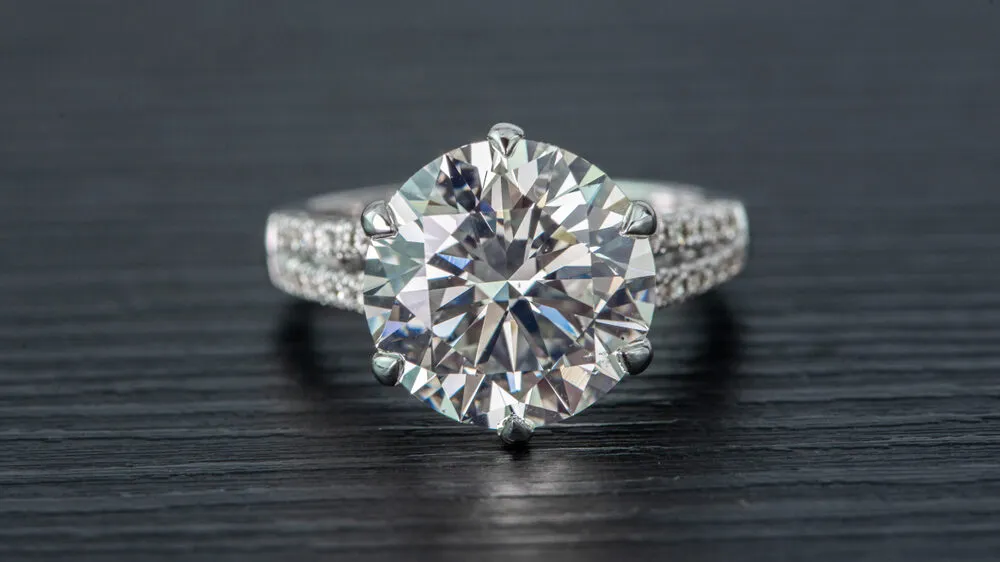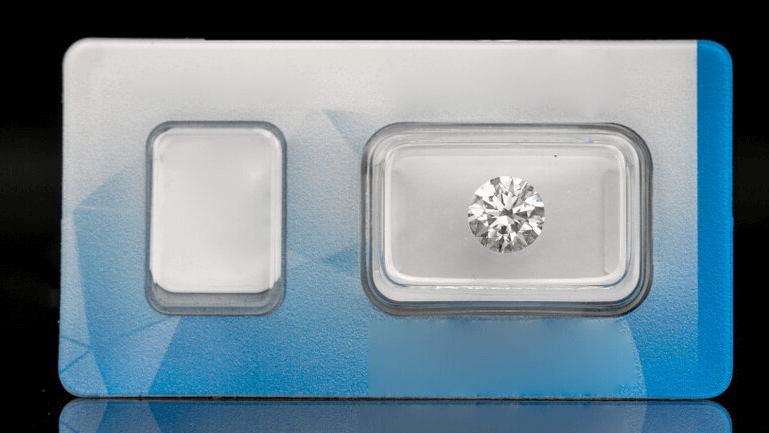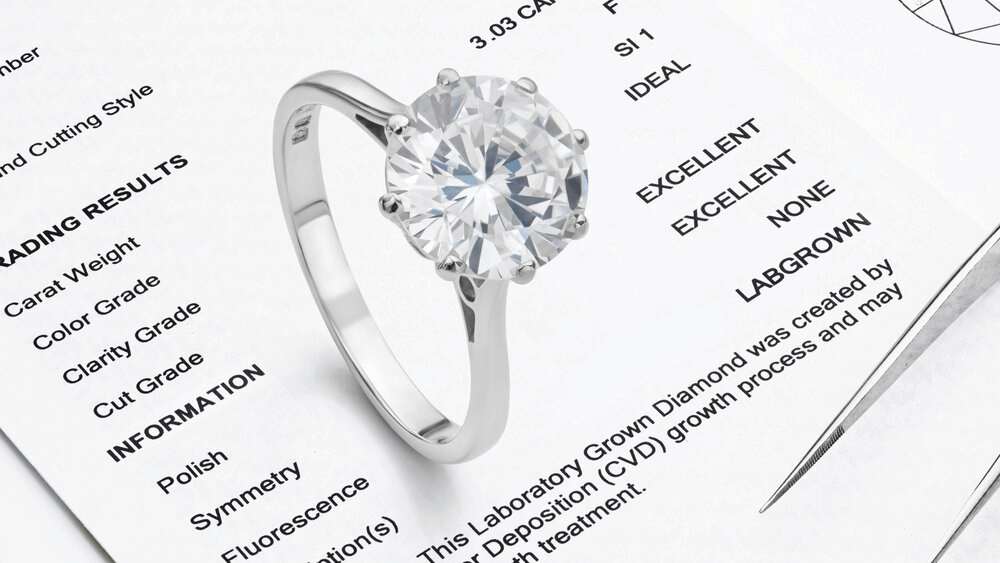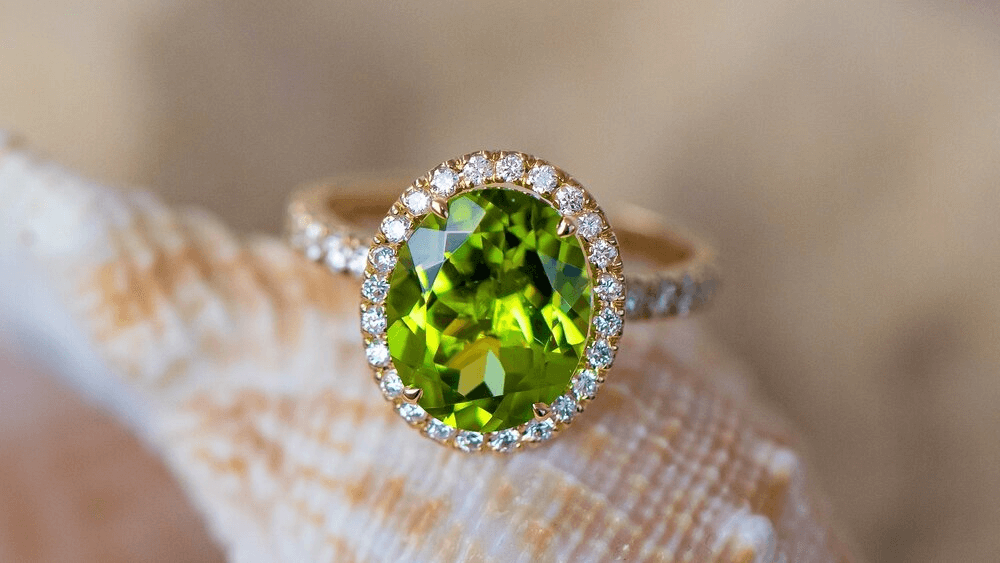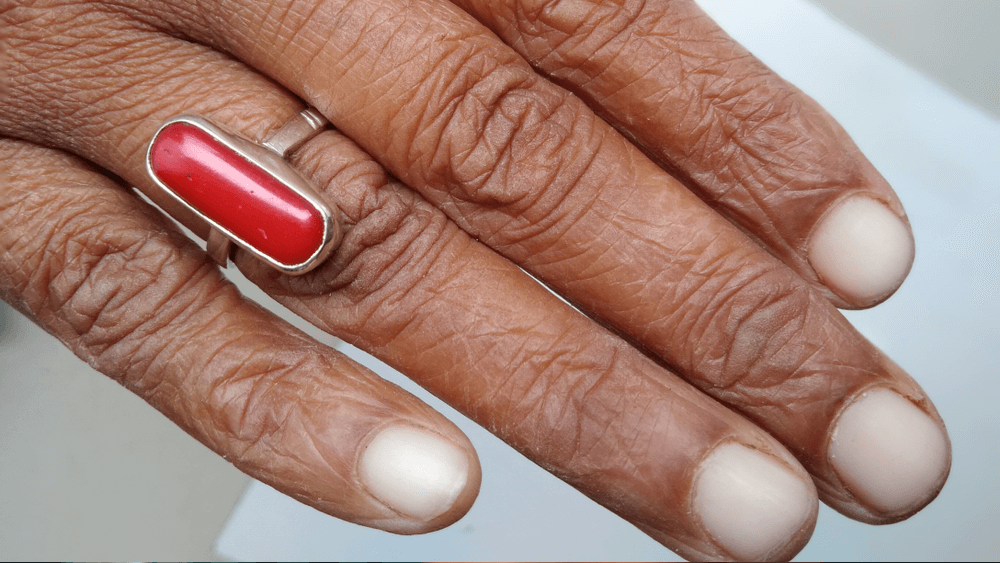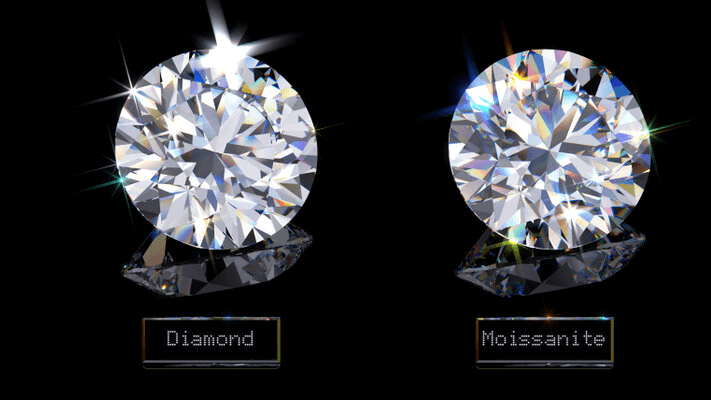Drama: Lab Grown vs Natural Diamonds Exposed

By Gary A.

Edited by Olivia H.
Published Aug 13, 2024
Edited on Mar 31, 2025
Some of us have a clear preference, while the rest are open to both possibilities. Here’s what you need to know about the lab-created vs. natural diamonds debate…

Navigate this guide:
- 8 Quick Tips for Buying a Diamond Engagement Ring
- Introduction: The Dazzling Debate
- Chapter 1: The Making of a Gem
- Chapter 2: The Ethical and Environmental Impacts
- Chapter 3: Value and Allure: What Drives the Market?
- Chapter 4: Making the Choice: Practical Considerations
- Our Expert Take
- Frequently Asked Questions: Lab-Grown vs. Natural Diamonds
Before we dive deeper into the specifics, here are some practical tips to help guide your decision-making process:
8 Quick Tips for Buying a Diamond Engagement Ring
Tip 1: Understand the Certification Process
- Certification: Ensure the diamond, whether lab-grown or natural, comes with a certification from a reputable organization like the Gemological Institute of America (GIA) or the International Gemological Institute (IGI). This guarantees the authenticity and quality of the stone.
Tip 2: Scrutinize for Quality and Brilliance
- Cut, Clarity, Color, and Carat: Pay close attention to the 4 Cs of diamond quality. A well-cut diamond will exhibit superior brilliance and sparkle. Even lab-grown diamonds can have inclusions, so examine the clarity. For color, decide how much colorlessness is desired. Finally, consider the carat weight based on preference and budget.
Tip 3: Compare Price Points
- Cost Comparison: Typically, lab-grown diamonds offer a cost advantage over natural diamonds of similar quality. Compare prices to understand the market and get the best value for your budget. Remember that natural diamonds often have a higher resale value.
Tip 4: Research the Origin and Impact
- Ethical and Environmental Considerations: Investigate the origin of the diamond. For natural diamonds, check if they are conflict-free (adhering to the Kimberley Process). For lab-grown diamonds, research the environmental impact of the manufacturing process.
Tip 5: Examine for Unique Characteristics
- Unique Features: Each natural diamond is unique, with its own set of internal characteristics (inclusions) and external characteristics (blemishes). Lab-grown diamonds can have unique identifiers too, such as specific growth patterns or laser inscriptions.
Tip 6: Understand Long-Term Value and Resale Prospects
- Future Value: Be aware that the resale value of lab-grown diamonds is currently lower than that of natural diamonds. Consider this if future value is a concern.
Tip 7: Pay Attention to Personal Preferences
- Personal and Symbolic Significance: Decide what is more important to you or your partner: the traditional and natural origin of a diamond or the modern, ethical, and budget-friendly aspects of lab-grown diamonds. This personal choice plays a significant role in your selection.
Tip 8: Understand the Treatment Processes of Lab-Grown Diamonds
- Treatment Processes: Familiarize yourself with the treatments lab-grown diamonds undergo, such as High Pressure High Temperature (HPHT) or Chemical Vapor Deposition (CVD). Understanding these processes helps in assessing the quality and durability of the lab-grown diamond.
Now that you’ve got these practical tips, use Jeweler AI below to find the perfect engagement ring that suits your style and budget:
Introduction: The Dazzling Debate
Flat or sparkling? Feather or memory foam? Starter or dessert? We’re used to making tough choices – or, in the case of dessert, finding that compromise that let’s enjoy both at the same time.
And choosing a diamond is a process that’s filled with tough calls. VS2 or SI1? So similar, yet so different. Round or cushion? 0.98 carats or the magic, whole ‘1’?
But, before you can get into any of those details, you first need to decide which side of the debate you sit on: do you want a natural, earth-made diamond, or a lab-grown diamond? Similar, but also worlds apart.
Chapter 1: The Making of a Gem
These days, there are two different ways for diamond to come into existence. And, yes, it counts as a real, legit, genuine diamond, even if it came out of a lab. The end results of both processes will be indistinguishable from one another – unless you’re an expert with a very powerful microscope capable of scrutinising the crystalline structure.
Interestingly, however, the processes couldn’t be more different.
Lab-Grown Diamonds: The Science Behind the Sparkle
Also sometimes known as cultured diamonds, lab grown refers to any diamond that has been formed in laboratory settings, rather than extracted from the earth. As we mentioned above, physically, chemically and optically, lab grown diamonds are the same as natural diamonds mined from the ground. The only difference lies in the way in which they were formed – one through natural geological processes over billions of years, the other through advanced technological processes replicating those conditions in a controlled laboratory environment.
There are two main methods used to create gem quality lab grown diamonds. The first is known as the HPHT method – or, more specifically, high-pressure high temperature. As the name suggests, this process involves subjecting a carbon source to extremely high pressures replicating those deep within the earth’s mantle, combined with intense heat over 1,500°C. When exposed to these conditions, the carbon atoms are forced to crystallize and form a diamond structure that is chemically identical to a mined diamond. The result is a rough diamond crystal that can then be cut and polished like a natural stone.
The other widely used method for creating a lab grown diamond is known as CVD, or chemical vapour deposition. In this process, a small diamond seed is placed in a sealed chamber and exposed to a high carbon gas like methane that is heated to over 800°C. This causes the carbon atoms within the gas to slowly crystallize and build upon the initial seed, atom by atom, growing into a pure carbon diamond crystal over time. While more technologically advanced, the CVD method produces diamonds that are atomically the same as HPHT and natural mined diamonds.
Whether grown with heat/pressure or chemical vapor, these technological processes allow laboratories to produce diamonds with the same chemical composition, optical characteristics and physical properties as the rarest and most valuable natural diamonds from mines. The only differentiating factor is their synthetic origin in a lab rather than geological origin within the earth’s crust.
Natural Diamonds: A Billion-Year Journey
The story behind the formation of natural diamonds is long and fascinating. We written a couple of guides on the subject in the past, and you can check out our full article on how natural diamonds form here.
Suffice to say that the process behind forming a natural diamond is much slower, and, arguably, much more intense.
Deep, deep underground, the conditions are incredibly volatile. The heat is extreme, with temperatures reaching far beyond anything we can comprehend, and the pressure is immense, with miles and miles of earth between the birthplaces of diamonds and the sky.
That pressure and heat very slowly turn carbon atoms into diamonds. All told, the process takes billions of years, and a single diamonds progress from deep below the earth to its surface is a very unlikely occurrence. It is thought that underground volcanic movement is largely responsible for transporting diamonds towards the earth’s surface. When you think about it, the fact that we can hold any natural diamond in our hands is testament to the raw power of nature.
Decoding the Physical Differences
Natural and lab grown diamonds are made from the same key components: carbon, heat, and pressure. True, there is one key part of the story missing when it comes to lab grown diamonds, and that’s time. A process that takes nature billions of years can take as little as a few weeks in the lab, but that really is the biggest difference between the two.
And, ultimately, the difference in timelines creates one of the only tangible distinctions between the two – and, even then, it’s very subtle…
The Hidden Signs: How to Tell Them Apart
Specific growth patterns are one of the key elements that are featured in natural diamonds as a result of their long and laborious development. The growth patterns in lab grown diamonds are very different. This is not noticeable to the naked eye – not even an expert’s eye – but it is something that can’t be replicated under lab conditions.
Other (minor) differences include:
- UV Fluorescence
Lab-grown diamonds can exhibit different fluorescence under ultraviolet (UV) light compared to natural diamonds. HPHT diamonds often show a distinct pattern, such as a cross or a banding effect, which is different from the random fluorescence seen in natural diamonds. - Types of Inclusions
Natural diamonds often contain inclusions such as minerals, while lab-grown diamonds may have metallic inclusions (in HPHT diamonds) or distinct patterns of strain. - Atomic Structure
Spectroscopic analysis, including infrared (IR) and photoluminescence (PL) spectroscopy, can identify differences in the atomic structure of the diamond. Lab-grown diamonds may show different absorption spectra, revealing the specific growth processes and materials used in their creation. - Laser Inscriptions
Many lab-grown diamonds are laser-inscribed on the girdle (the outer edge of the diamond) with information about their synthetic origin. This inscription can be viewed under magnification.
Chapter 2: The Ethical and Environmental Impacts
One of the things that made lab grown diamonds become very popular very quickly was the fact that marketers were able to pitch them as an ethical alternative to natural diamonds. This is largely down to the fact that, during the late 20th century, the topic of blood diamonds reached headlines and made a lot of consumers very wary of investing in diamond.
The other side of the story is environmental. Since lab grown diamonds don’t need to be excavated from deep minds or alluvial deposits, marketers pitched them as the environmentally friendly alternative.
The Controversy of Mining: Ethics in the Natural Diamond Industry
We’ve written a lot on this topic, and you’ll want to check out our full guide to ethical diamonds in order to learn more about the facts of avoiding blood diamonds, and how diamonds can do good for small communities in diamond-producing countries.
For many years, countless miners and small communities were suffering under the weight of exploitation, war, greed, child labour, and violence. By the 1990s, it was very clear that the industry would have to change, and new pressure from consumers prompted a 180° turn from many countries around the world. The formation of the Kimberley Process and a fresh emphasis on sourcing from jewelers and consumers meant that things could change.
These days, any diamond you buy from a legitimate seller in the US will originate from a country that emphasises safety, fairness, opportunities, and ethics within its diamond industry. The past two decades have proven that diamonds can bring a lot of good to these communities, enabling infrastructure, education, and work opportunities to replace what was once a broken system.
Lab grown diamonds don’t rely on artisanal miners or remote communities to produce diamonds. Instead, they rely on much smaller teams working in laboratories to keep the machines working. Of course, this means that lab grown diamonds are removed from the ethical dilemmas circling around natural diamonds, but it also means they are removed from the potential to boost GDP and give countless individuals consistent work.
In many ways, the fact that lab grown diamonds are marketed as the ethical alternative relies on an outdated picture of the diamond industry.
Lab-Grown Diamonds: A Sustainable Choice?
Lab-grown diamonds are often marketed as a sustainable alternative to mined diamonds, primarily due to their reduced environmental impact and avoidance of human rights issues associated with mining. They eliminate the need for extensive mining operations, which can cause significant ecological damage.
However, the production of lab-grown diamonds is not without its environmental costs. The manufacturing process requires substantial energy, which in turn leads to high carbon emissions.
While lab-grown diamonds can reduce certain environmental impacts, their overall sustainability is complex and dependent on the energy sources and practices used in their production.
Lab grown diamonds are a renewable resource, since we can always produce more of them. Natural diamonds are non-renewable, since it is feasible that one day the earth will just run out. This isn’t going to happen anytime soon, but it does explain why this terminology is often used in marketing campaigns for lab grown diamonds.
Chapter 3: Value and Allure: What Drives the Market?
What do consumers want? Well, it’s complicated…
The Price of Permanence: Natural Diamonds
It’s never just been about the sparkle. When a person invests in a diamond, they’re investing in a love story. No, not their own – although true, they’re also investing in that love story – but a love story that has been told over and over again for thousands of years.
One of the things we love about diamonds is their unlikely existence. For one of the most beautiful substances on earth – if not the most beautiful substance on earth – to have originated in the most volatile place on earth, and over such an unimaginable span of time, is truly awe-inspiring.
This is what the cost reflects. It’s not just the beauty of the piece, but its rarity and history. Natural diamonds are one-of-a-kind pieces, and they’re an exhaustible resource. To own one is special, and not just because it sparkles.
Lab-Grown Diamonds: Affordable Luxury?
That said, lab grown diamonds certainly have something to offer the right buyer. They are more affordable, which means you’ll get a bigger diamond for the same investment. For instance, a 5 carat lab-grown diamond offers the brilliance and grandeur of its natural counterpart at a fraction of the cost, making it an excellent choice for those seeking luxury within a budget. And, if you do feel like you’re opposed to mining, a lab-grown diamond is the obvious choice.
Lab grown diamonds are generally between 60% and 80% cheaper than comparable natural diamonds. As you can see, it’s a lot easier to get more bang for your buck – but, is size everything when it comes to diamond?
Keep in mind that the long-term resale value of lab grown diamonds is unlikely to be as high as natural diamonds. Even natural diamonds see a significant drop in value once they have been purchased, but, over decades, they do retain some of that original value. Since lab grown diamonds are not rare, there’s good reason to believe they will never be very valuable second-hand. It’s early days, so only time will tell.
Chapter 4: Making the Choice: Practical Considerations
So, which side of the fence do you land on?
Pros and Cons of Lab-Grown Diamonds
The Pros
- They’re cheaper – by a lot, actually. You can get a bigger diamond if you don’t mind the less-than-romantic story behind its creation.
- They avoid intensive mining operations – remember to think about this on balance, since growing a diamond takes a lot of energy, but It could be a selling point to you.
- There’s a much lower risk of exploitation – as we mentioned, however, the diamond industry is not what it once was…
The Cons
- They’re not as special – since they were made by human-design, they don’t have that fascinating backstory natural diamonds have.
- They’re not the traditional choice – proposals are all about tradition!
- They don’t have long-term value – this is the case with any mass-produced item.
Should You Buy a Lab Created Diamond?
Maybe. It depends on what you value. Despite the surging popularity of lab grown diamonds, a surprising number of people – or, perhaps, unsurprising – still have their hearts set on a natural diamond. As we mentioned above, it was never just about the look of diamonds. Their popularity is about more than appearances, and the fact that lab grown diamonds haven’t replaced natural diamonds in the market is testament to that fact.
Think about the story you want your engagement ring to tell, what your partner values and once, and how you feel with a natural diamond, or a lab grown diamond on the day of the proposal – and after.
Our Expert Take
There are pros and cons to both choices. In all likelihood, you already have an idea in your mind about which type of diamond you want to go for – whether you want the history and the romance of the natural diamond, or the cost-effectiveness and convenience of a lab grown diamond.
If you’re still on the fence, consider talking to your partner. Maybe they know what they want, or maybe you’ll find it easier to reach your final answer together.
Frequently Asked Questions: Lab-Grown vs. Natural Diamonds
- Q: What is the difference between lab-grown and natural diamonds?
- A: Lab-grown diamonds are created in controlled laboratory environments using advanced technological processes, while natural diamonds are formed naturally in the Earth’s mantle over billions of years. Both share the same chemical, physical, and optical properties.
- Q: Are lab-grown diamonds as good as natural diamonds?
- A: Yes, in terms of physical, chemical, and optical characteristics, lab-grown diamonds are identical to natural diamonds. The main differences lie in their origin and often in their pricing.
- Q: Can you tell the difference between lab-grown and natural diamonds with the naked eye?
- A: No, lab-grown and natural diamonds look identical to the naked eye. Specialized equipment and expertise are required to differentiate between them.
- Q: Do lab-grown diamonds have resale value?
- A: Lab-grown diamonds generally have a lower resale value compared to natural diamonds. This is due to their wider availability and lower initial selling price.
- Q: Are lab-grown diamonds environmentally friendly?
- A: Lab-grown diamonds are often considered more environmentally friendly than mined diamonds, as they require less earth excavation and have a smaller carbon footprint. However, they still require significant energy to produce.
- Q: How do lab-grown and natural diamonds compare in price?
- A: Lab-grown diamonds are typically more affordable than natural diamonds, offering a 70-80% price reduction for similar quality. This makes them a popular choice for budget-conscious buyers.
- Q: Is it ethical to buy lab-grown diamonds?
- A: Yes, lab-grown diamonds are often considered more ethical compared to natural diamonds as their production avoids the environmental and social issues associated with traditional diamond mining.
- Q: Will a lab-grown diamond last as long as a natural diamond?
- A: Yes, lab-grown diamonds are just as durable as natural diamonds. They rank a 10 on the Mohs scale of hardness, making them equally resilient for everyday wear.
- Q: Can lab-grown diamonds be certified?
- A: Absolutely. Like natural diamonds, lab-grown diamonds can be and often are certified by reputable gemological laboratories, assessing their quality based on the 4 Cs (Cut, Color, Clarity, Carat).
Discover your perfect diamond with Jeweler AI – the smart choice for savvy diamond buyers in the lab grown vs natural diamonds debate.
FOLLOW-UP GUIDE SERIES

